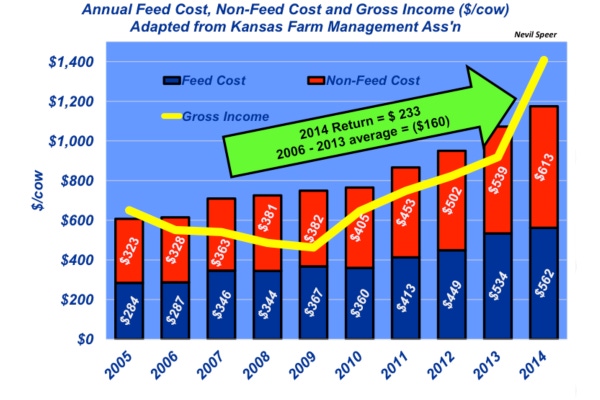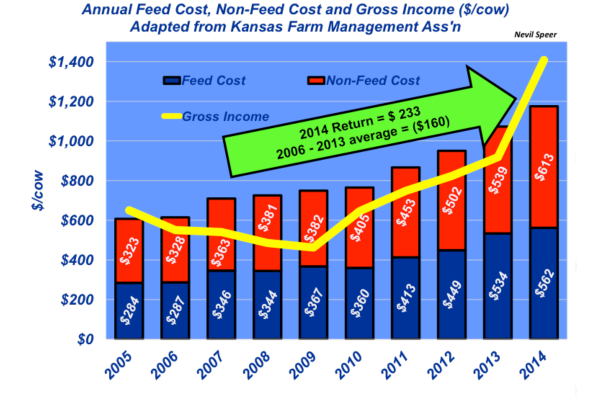Industry At A Glance: How non-feed costs affect profitability
Consider the importance of overhead costs when calculating cowherd profitability.
August 27, 2015

During the past several weeks, Industry At A Glance has focused on cowherd profitability. That focus has primarily come from two different perspectives: land and cows.
Land value appreciation over time has been, and continues to be, an important source of growing the balance sheet for all types of operations. Recent USDA data reflects cropland and pasture values are at new all-time highs ($4,130 per acre and $1,330 per acre, respectively). However, the year-over-year gains are beginning to flatten out.
Accordingly, as noted last week, the cow-calf sector has largely assumed a “risk-off” mentality during the past 10 years, relying on land prices to build equity versus deriving it from the cow side. The market during the past several years, though, finally spurred cow-calf producers to initiate meaningful expansion.
That said, many analyses and data sets detailing cow-calf returns often include only operating and direct costs, such as feed. It’s extremely difficult and time-consuming to account for overhead or indirect costs such as labor, machinery, and equipment. Nevertheless, this week’s illustration highlights the importance of the latter on overall profitability.

The data reflect 10 years of feed costs, non-feed costs and gross income from cow-calf operations in the Kansas Farm Management Association annual summaries. Every year during the past 10 years, running cows was profitable if considering feed costs only. However, inclusion of non-feed costs in the analysis portrays a very different scenario. Only two of the past 10 years would have resulted in a positive return; meanwhile, the average loss between 2006 and 2013, when considering all costs, was $160/head.
Does the data outlined above align with your general perception of running a cowherd? How much work have you done to analyze overhead costs? What’s the true picture of cow profitability versus land appreciation within your operation? Where do you see overall costs headed in the coming years? If higher, do you perceive the market keeping up with those costs?
Leave your thoughts in the comments section below.
You might also enjoy:
Burke Teichert: Are you a low-input, high-management rancher?
13 new utility tractors for the ranch in 2015
Are feeder cattle prices on the cusp of a collapse?
How to prevent & treat pinkeye in cattle
60 stunning photos that showcase ranch work ethics
When is the best time to wean? It might be younger than you think
About the Author(s)
You May Also Like




.png?width=300&auto=webp&quality=80&disable=upscale)
